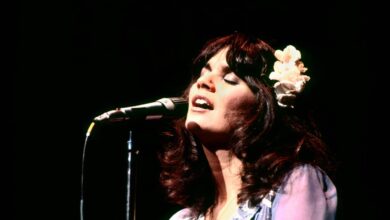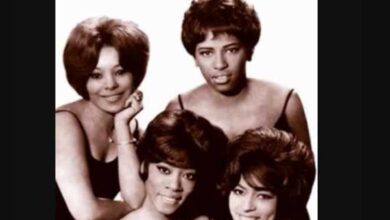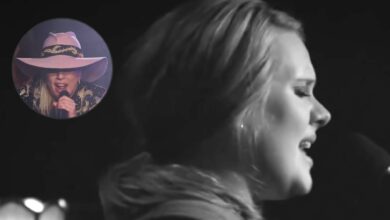The Gatlin Brothers’ “Broken Lady” Reshapes Country Balladry with Intimate Storytelling in 1976
Released in 1976, “Broken Lady” by The Gatlin Brothers offered a strikingly personal and emotionally raw approach to country songwriting, distinguishing itself in an era when the genre was often dominated by honky-tonk flair and outlaws with guitars slung low. Written by Larry Gatlin, the eldest of the trio, the song was a breakthrough moment for the group. It soared to No. 5 on the Billboard Hot Country Singles chart and went on to win the Grammy Award for Best Country Song in 1977. More than a commercial success, “Broken Lady” announced a new sensitivity in country music, a willingness to confront heartbreak not with bitterness, but with grace.
The Gatlin Brothers—Larry, Steve, and Rudy—hailed from Seminole, Texas, and were raised on a steady diet of gospel harmonies, Southern values, and hard-earned musical discipline. Larry, the primary songwriter and lead vocalist, was already carving a name for himself as a Nashville songwriter when the group began recording as a trio. Their sound stood apart: tight family harmonies, polished production, and a lyrical focus that leaned more poetic than populist. Larry’s training in classical and gospel music lent a sophistication to their arrangements, while the sibling chemistry gave their performances a deep-rooted authenticity.
“Broken Lady” was written during a time of personal reflection for Larry Gatlin. Inspired by the pain he witnessed in someone close to him—a woman navigating heartbreak and emotional abandonment—the song was born not out of grand storytelling but quiet observation. Larry later revealed that the song was meant to honor the quiet dignity of women who endure suffering with strength and resolve. The title is both literal and metaphorical, presenting the image of a woman not destroyed by her pain but simply—and beautifully—wounded. That emotional nuance made it stand out among the more macho fare of the day.
The recording was produced by Fred Foster, a legendary figure who had also worked with Roy Orbison and Kris Kristofferson. Under Foster’s direction, the track was crafted with a gentler hand than many contemporary country hits. A soft acoustic guitar intro gives way to subtle piano and string flourishes, creating an almost cinematic backdrop. Larry’s vocal performance is restrained but rich with feeling, and the harmonies from Steve and Rudy add a layer of warmth that makes the sorrow in the lyrics feel deeply human. The arrangement was polished, but never sterile—leaving room for the emotion to breathe.
Critics and audiences responded quickly to the song’s sincerity. “Broken Lady” debuted on the charts in early 1976 and steadily climbed into the top 10. Its Grammy win the following year confirmed what fans already knew: this was a song that elevated the art of country balladry. It wasn’t just a hit—it was a moment. And in a decade where country music was beginning to embrace crossover trends and pop polish, “Broken Lady” showed that emotional honesty could still rule the airwaves.
The song also marked a cultural turning point in how women were depicted in country music. Rather than portraying the “other woman,” the abandoned lover, or the idealized housewife, “Broken Lady” honored complexity and quiet strength. It was empathetic without being patronizing. That portrayal resonated with a wide audience, especially at a time when second-wave feminism was pushing for more nuanced female representation across media. For many listeners, the song offered comfort and understanding in a way few country hits had done before.
“Broken Lady” also opened major doors for The Gatlin Brothers. It established them as serious artists, not just harmony singers or Nashville hopefuls. After the song’s success, the group began headlining their own tours, performing on national television, and becoming staples of the Grand Ole Opry. Larry Gatlin’s songwriting also gained greater demand, leading to collaborations and covers by other country stars. The success of “Broken Lady” essentially launched the brothers into the elite ranks of 1970s country performers.
Its impact on the genre extended beyond their own career. The vulnerability of “Broken Lady” helped pave the way for other male artists to explore similar emotional territory. It’s hard not to draw a line from this song to the later works of artists like Vince Gill and Randy Travis, whose ballads would also balance masculinity with emotional openness. “Broken Lady” proved that tenderness could be commercially viable.
The song has seen several notable covers over the years. Perhaps most famously, Dottie West performed it live during a tribute to Gatlin’s songwriting, offering a gender-reversed take that only deepened the song’s impact. Other country singers, including Kenny Rogers and Glen Campbell, praised the song for its lyrical maturity. Despite its deeply personal roots, “Broken Lady” became something of a universal anthem for heartbreak handled with dignity.
Around the time of the song’s release, Larry Gatlin was also dealing with newfound pressures. The spotlight intensified, and so did the demands of fame. Yet, even amid the group’s rising star, “Broken Lady” remained a grounding force. It reminded fans—and the artists themselves—that their strength lay in honest expression, not just showmanship. The song was performed on nearly every stop of their tour and often brought the loudest, most heartfelt applause.
In the decades since, “Broken Lady” has never lost its power. It continues to receive radio play on classic country stations and is frequently included in retrospectives of Grammy-winning country songs. Its elegant simplicity and emotional clarity make it one of those rare tracks that seem to grow more resonant with time. Whether heard for the first or the fiftieth time, the song never fails to strike a chord.
In terms of shaping musical direction, “Broken Lady” helped normalize introspection and poetic vulnerability in a genre that was evolving rapidly. As country music began to cross into pop territories in the late ’70s and early ’80s, the song served as a reminder that depth and melody could coexist with commercial appeal. The production techniques—particularly the use of strings and vocal layering—would become more common in the years to follow.
In later years, The Gatlin Brothers would continue to tour and record, earning a loyal following that admired both their vocal precision and their integrity as artists. They were inducted into the Gospel Music Hall of Fame in 1992, a nod to the spiritual depth that often underpinned their music. And though many hits would follow, “Broken Lady” remained their cornerstone—a song that introduced them not just as singers, but as storytellers of rare compassion.
Ultimately, “Broken Lady” is remembered not just as a hit single, but as a turning point. It proved that a song could speak softly and still be heard loud and clear. It gave voice to pain without melodrama and honored the strength in vulnerability. For The Gatlin Brothers, it was the beginning of a remarkable journey. For country music, it was a reminder of its deepest power—the ability to tell the truth, gently.



